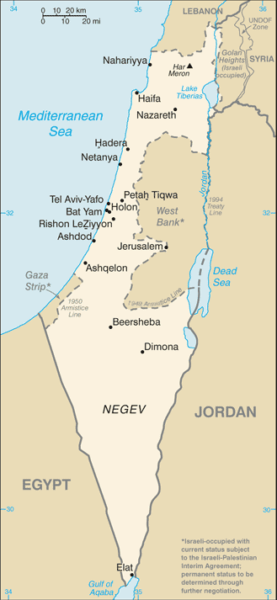CDR Salamander puts on his Operational Planning hat and sifts through what Israel may decide to do in light of open source information from Israeli and other sources:
This isn’t going to make anyone happy. It doesn’t matter if you are on the “cease fire and de-escalate” left or the “Linebacker III” right — none of my COAs will be quite what you are looking for … though the Linebacker III crowd might be OK with COA-B and COA-C … but I’m getting ahead of myself.
Cut this ‘ole Operational Planner some slack, and a few caveats:
- I’ve had to rewrite 85% of this from its first draft over the weekend as we now have Commander’s Intent (CI) and higher Direction and Guidance (D&G). That had me discard two of my three Courses of Action (COA).
- I am quite sure the Israeli Defense Forces had appropriate draft Operational Plans (OPLANS) on the shelf with all sorts of Branch Plans and Sequels waiting to be updated and providing enough once dusted off to get things in to Phase I.
- I don’t have a Planning Staff or even a Core Planning Group, intel support, or even some Italian colleagues to remind me to take my 10:00 and 15:00 coffee breaks, but I’ll do my best anyway. As anyone in crisis response planning can tell you — as opposed to advanced plans types — you have to be comfortable enough to accept that you don’t have enough time, staff, or information to produce a great OPLAN, but you’ll come up with a good enough plan anyway. You’re happy to be wrong about a detail or two, and are open-minded enough, secure in your ego, and content to change what you thought was perfect — some or all of your plan — the moment you get better information, changes in CI or D&G, or the situation develops in unexpected ways … as they do.
- If you are looking for a detailed Tactical OPLAN or a sweeping Strategic OPLAN, you’re at the wrong substack. I’m an Operational Planner and what I am about to do is an “elevator speech” level Preliminary COA Decision Brief with the principals (J2, J3, J4, J5, and the Chief of Staff) where they get to weigh in and refine what the Planning Group I am the Chair of has produced (OK, I’m a Planning Group of one and I made myself Chair … I don’t care, it’s going on my FITREP anyway). Following the Principals’ input — especially from the Chief of Staff who has had better one on one time with the Commander and as such has the nuance no one else does — I’ll beg for a day and will be told I have two hours to make changes and then well brief the Commander.
Working from open-source information, we have CI and D&G from the Prime Minister and the Minister for Defense.
If you go to YouTube you can get the script, but we’ll use this statement from the weekend as a close approximation of POLMIL-level guidance from Prime Minister Netanyahu;
As a Planning Staff, what do I need to take away from this?
- Israel is at war.
- Israel will finish it.
- We will exact a price that will be remembered by them (Hamas) and Israel’s other enemies for decades to come.
From Defense Minister Yoav Gallant we have:
- Gaza won’t return to what it was before.
- We started the offensive from the air, later will also from the ground, and that’s how it will end.
- Gaza will never return to what it was.
Like I said … that had me ditch two of the my three COA from this weekend. If you wanted to know how it shifted, my most dovish COA is gone, and my most harsh COA is now the center of my Overton Window. A planner must try to align with CI and D&G as it is understood — not how he wishes it to be.


















